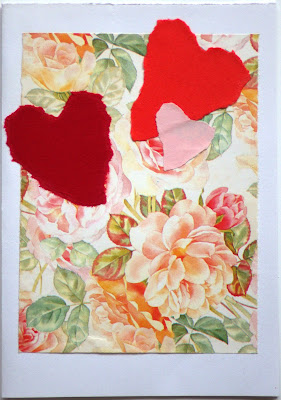Although using a standard size (letter or A3 page) allows for easy reproduction of a zine, I wondered how the method would translate to larger and heavier pieces of paper. I decided to find out and pulled out some paper samples to turn into large zines.
The heavy pages are definitely harder to fold than the photocopy or typing paper... First fold in half.
Then fold in half again.
The third folding in half is even a challenge for the bone folder and the edges do not stay uniform.
Unfold back to the first folding so that centre creases are visible. The crease on the lower fold (if you consider that the upper part is open, as is obvious here with one of the calendar page zines).
With the heavier papers I took out my matte knife as I knew some cutting would be necessary, rather than simple tearing.
Unfold the whole page and the cuts are in the centre. It is easy to unfold and this is very useful if you are going to photocopy your finished zine. I was also curious about more formats for zines, again made from 1 initial standard sheet of paper that is easily reproducable, and found several youtube videos for making an 8 page and a 14 page zine, courtesy of autumnthing.
Pick the page up and push the ends together so that a central square is automatically formed.
Continued pushing will bring the "squared" pages together and voilà, your zine is ready to become whatever you want! With heavy paper you may need to crease the folds again with the bone folder.


































